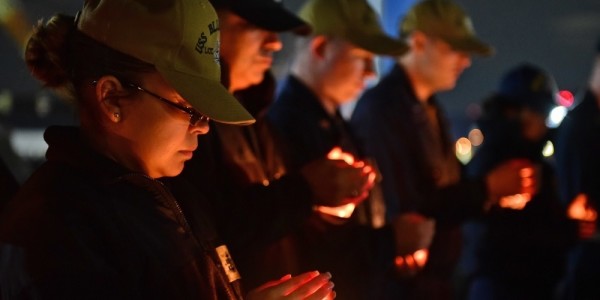

The Navy –
like its fellow sea service the Marine Corps – saw active-duty suicides hit a new high last year, according to Navy Personnel Command.
A total of 68 active-duty sailors and 11 sailors in the Navy Reserve took their own lives in 2018,
data on NPC’s website shows. That is the highest number of active-duty suicides in the data, which goes back to 2006, while the number of Reserve sailors who killed themselves remains stubbornly high.
Of the active-duty sailors who killed themselves, 31 were on shore duty, 19 were assigned to ships, and the remaining 18 were on sea duty but not necessarily embarked on ships or deployed at the time, according to the Chief of Naval Personnel’s office.
Two of the Reserve sailors who committed suicide were assigned to a Navy Operational Support Center as part of the Full-Time Support program, according to CNP. The remaining reservists were not in drill status: Eight were assigned to Navy Operational Support Centers and one was assigned to Construction Battalion Maintenance.
The Navy’s suicide epidemic is not limited to junior enlisted sailors. On Dec. 1, Vice Adm. Scott Stearney, commander of 5th Fleet, was found dead in his Bahrain home. Some media outlets reported there were indications that Stearney had killed himself. Nearly two months later, Navy officials have not publicly released the cause of Stearney’s death.
Navy experts and investigators look into each suicide and pore over data to identify trends, risk factors, missed red flags, and lessons learned that can prevent further deaths, said Rear Adm. Philip Sobeck, director of the 21st Century Sailor Office.
“Demographically, the majority of Sailors who have died by suicide were caucasian males between the ages of 20 and 24 years; similar to suicide demographics in the civilian population,” Sobeck said in a statement to Task & Purpose.
“Intimate relationship issues, periods of transition, mental health challenges and legal/disciplinary issues are risk factors that appear to be present in many deaths in 2018, as well as previous years. Firearms continue to be the most commonly used method of suicide.”
CNN first reported on Monday that the Navy had seen a new high in active-duty suicides in 2018.
The Navy is combatting suicides through increased suicide prevention training, programs such as Sailor Assistance and Intercept for Life, and placing mental health professionals with operational units, said Capt. Tara Smith, with Navy’s Suicide Prevention Branch.
“We continue to emphasize to our leaders and sailors the importance of building trust and connectedness in the unit to create that environment where sailors can feel comfortable asking for help and get assistance without fear,” Smith said in a statement to Task & Purpose.
